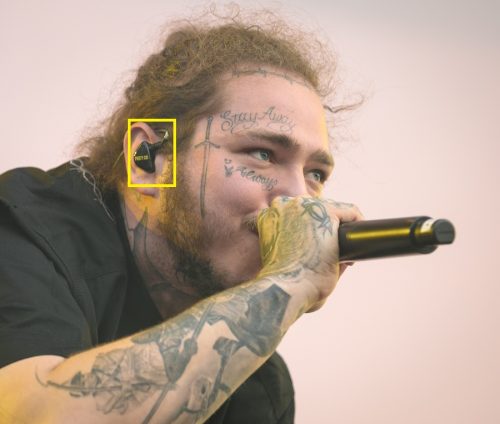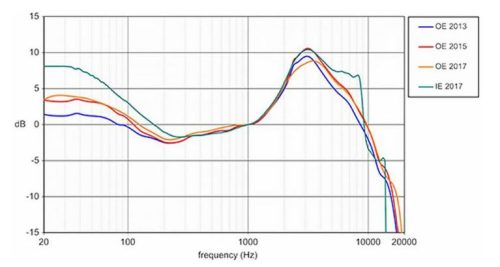Monitor headphones, which are traditionally considered to be equipment for professionals, have become increasingly popular among audio enthusiasts alike as fidelity continues to become more accessible and in demand by general consumers.
What are monitor headphones? While generic or, let’s call them, “regular” consumer headphones are designed to sound pleasant, monitor headphones (sometimes otherwise called studio or reference headphones) are primarily designed for accurate reproduction to help professionals with critical listening and ensuing audio production.
Hearing an accurate reproduction of a recording is essential for audio professionals to work on it, but, the general consensus is that neutral tuning does not sound as pleasant to the lay consumer as styled tuning does.
A good analogy would be that monitor headphones are to regular headphones as work boots are to slippers – work boots are not as comfortable or pleasant to wear as slippers are, but work boots are what’s needed to get jobs done, if that makes sense.
Monitor headphones are designed to excel at detail, meaning they help you distinguish and hear the more subtle sounds – think vocal consonants, percussive sounds, intentional electric guitar distortion, etc.
Even though monitor headphones are intended for professionals, plenty of regular consumers want headphones with neutral tuning. Some people do actually prefer the neutral sound style, and others might want to really hear and appreciate the full nuances of the music they’re listening to.
As for me personally, while I don’t generally prefer a neutral sound signature, I still have a few pairs of monitor headphones and earphones that I use regularly, both for my work for this site as well as sometimes just for curiosity of what a song “really” sounds like.
How Are Monitor Headphones Different From Regular Headphones
While Monitor headphones can vary quite a lot within their own niche – as regular headphones can – there are a few general differences between the two:
Sound Signature
The main difference between regular headphones and monitor headphones is the sound signature. While generic headphones will have their frequency response curve tuned and shaped to a specific style, monitor headphones aim for as flat and neutral of a response curve as possible. Neutral tuning means you will hear, theoretically at least, the recording exactly as it was rather than as good as it could sound, even if that might not exactly be the “true” sound.
Fit Style
While regular headphones are generally designed to be easy and comfortable to wear, monitor headphones, as part of their aim to be as accurate as possible, are designed to provide as much natural isolation as possible to block out all ambient noise that might interfere with critical listening. Monitor headphones will typically have a lot of clamp force and squeeze quite tightly on your head.
Quality and Price
True studio grade monitoring headphones are generally expensive, from a couple to several hundred dollars a pair, and sometimes even more. Tuning can do a lot to make less expensive headphones or earbuds sound impressively good on a budget, but, creating good sound with neutral tuning is harder, especially to meet the standards that professionals need to work on tracks.
Types of Monitor Headphones
There are a few general types and styles of monitoring headphones that are designed for different situations.
Closed Back Over Ear
These headphones intend to offer maximum isolation, and are ideal in noisy environments like a live show where someone like a sound engineer needs to be able to hear what’s actually going on to do their job properly.
Open Back Over Ear
Open back headphones have vents or ports that allow sound to escape, which helps create the sensation of a more open and natural sounding soundstage. They’re mainly used in quiet environments where noise incursion or leakage isn’t going to be an issue.
In Ear Buds
In Ear Monitors look like the earbuds that you see most people wearing these days, but they’re usually bigger and sit flush with the what’s called the concha of the ear. In ear monitors are intended for performers who might be playing and moving around and would have regular headphones flying off their heads. In ear monitors are also primarily designed to provide hearing protection to people who are right on stage where the sound is loudest and, if unattenuated, could cause hearing damage.
How do Monitor Headphones Actually Sound Different From Regular Headphones?
As previously explained, monitor headphones generally have neutral tuning that prioritizes clarity and detail while regular headphones have styled tuning that emphasizes tone and aesthetics, but what does that actually mean?
Well, most regular headphones roughly follow the Harman Curve style of tuning, which puts an emphasis on the bass and mid-high trebles. The Harman Curve is the product of research done by Harman International, and represents the decidedly gold standard of user preferences, and I generally agree that this style of tuning makes most headphones sound their best for casual listening for pleasure.
Bumping up the bass frequencies and peaking the mid-high treble frequencies by a few decibels to achieve the Harman Curve shape helps create a wide and immersive feeling sound stage, nicely forward and crisp sounding vocals and instruments, and a pleasantly airy feeing in general. This is also a great “hack” to make less expensive headphones and earbuds with limited design and components still sound very decent.
An unadjusted response curve that remains flat and neutral on the other hand, especially if someone has never listened to true monitor headphones, might sound a little thin, boxy, narrow, and harsh, and have bass and vocals that seem a little far away and recessed. However, what you get is distinct separation and detail that allows you to really hear and focus in on each individual sound and instrument, and this is what professionals or enthusiasts need to work on tracks or to really appreciate the individual components and nuances of a recording.
Popular Monitor Headphone Brands
A lot of different companies make all kinds of monitor headphones, but there are a handful of companies that really specialize in monitor headphones in various styles, and if you’re interested in getting a pair they are definitely worth checking out as a place to start.
Audio-Technica
If you ever watch video recordings of podcasts and such, there’s a good chance that the headphones you see them wearing are Audio-Technica – the company is very well known and established in the audio industry for making headphones which have high quality neutral sound and good build quality, but that also remain decently priced.
The ATH-40X, pictured above, is one of the most popular closed back headphones ever, and is in fact what you see me wearing in my author box pic – I’ve had my pair for years and I love them and use them all the time. The ATH-50X is also very popular with it’s larger drivers.
Beyerdynamic
Beyerdynamic is another reputable brand that produces high-quality monitor and studio grade headphones, and particularly so in the open back category for those who want them.
Beyerdynamic headphones definitely run on the expensive side, several hundred dollars in some cases, but the DT 990 Pro (pictured above) is a very popular and well regarded open back pair of monitor headphones that is still relatively affordable. Keep in mind that, while most people will never need a headphone amplifier, these probably will, and if you opt for the higher impedance 250 ohm version you will definitely need a headphone amplifier.
Conclusion: Is A Pair of Monitor Headphones Worth Getting?
If you’re just looking for a single pair of decent all around headphones for general use, I would actually advise against going with monitor headphones, because the styled sound signature that most people like differs from the flat and neutral style tuning that monitor headphones aim for. You’ll also likely end up spending more money on something that’s less comfortable to wear.
On the other hand, if you’re an aspiring enthusiast who is looking to start buying multiple pairs of headphones for different purposes, I would say that a decent pair of monitor headphones is absolutely worth investing in – they will likely give you a freshly unique listening experience that will make you notice all kinds of new details in the music you already listen to. I don’t listen to my ATH-M40X as a main headphone, but I still use them all the time and love them.
And if you’re an aspiring audio professional or seasoned veteran, a good pair of monitor headphones is essential, but I doubt I even need to mention that.
One thing that’s worth ending on is that a lot of less reputable companies like to add the “monitor” or “reference” or “studio” descriptor to their products, and these terms can sometimes get thrown around way too loosely. Point being: if a pair of “studio grade” closed back headphones is selling for 20 dollars, it’s definitely not actually studio grade.





